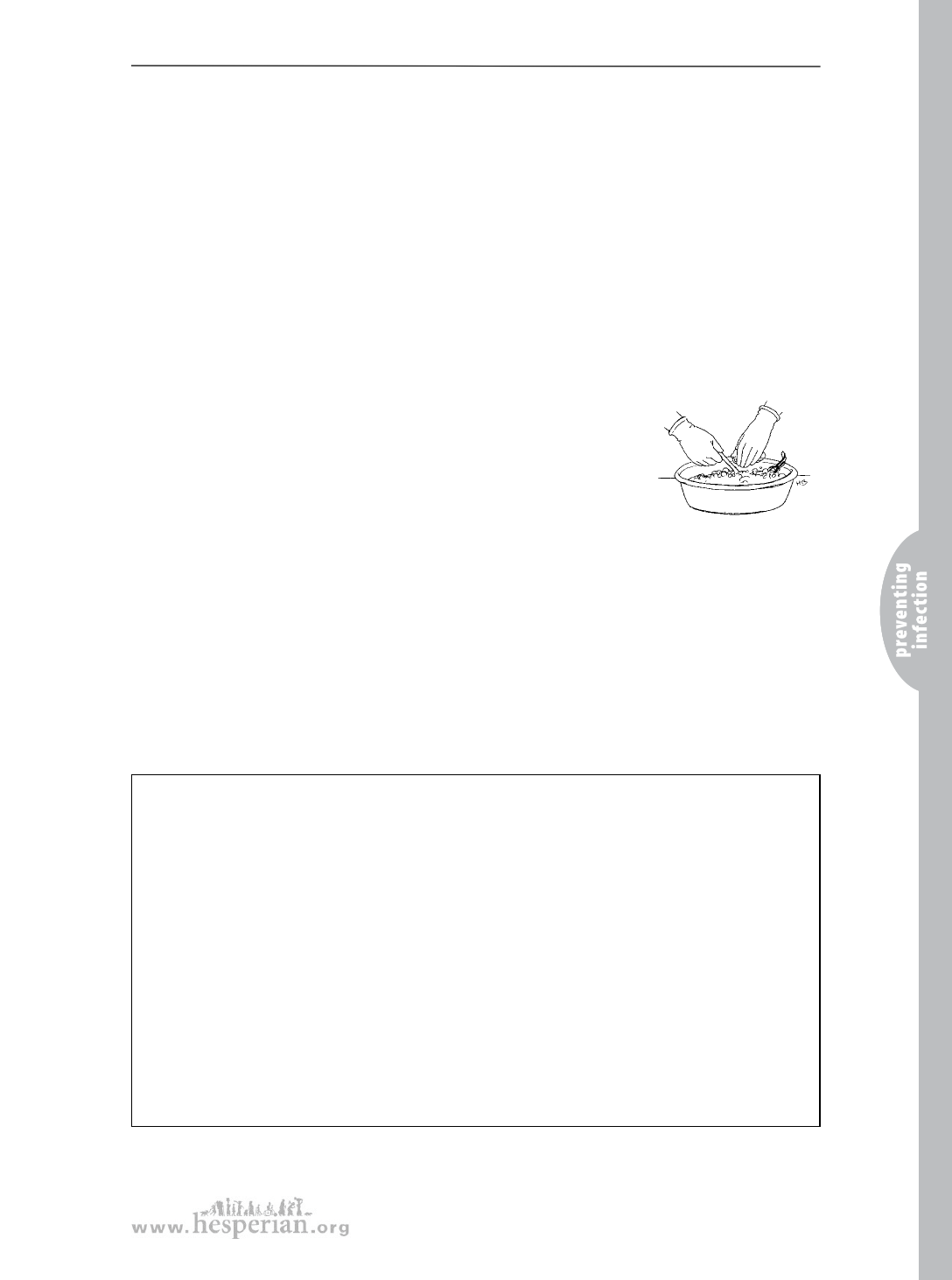
Clean and disinfect tools
Clean and sterilize tools
All the tools used at a birth, exam, or procedure must be cleaned and sterilized.
Cleaning and sterilizing the tools gets rid of germs. This protects women from
getting sick.
1. Soak your tools
Tools that have been used must be soaked for at least 20 minutes in bleach
solution (see page 57).
2. Clean your tools
All tools and equipment you use at a birth or a procedure
must be clean. Wash them well after each birth, using a
brush to remove any blood or dirt in the hinges or rough
edges of your tools. Clean off any rust, and get rid of tools
that are dull or damaged. To protect yourself, wear heavy
gloves when you clean your tools.
After everything is washed, any tools that you use inside
a woman’s body must also be sterilized to kill germs.
Carefully wash
all the dirt off
your tools.
3. Sterilize your tools
To sterilize means to kill all the germs on something. If your tools are sterilized,
they will not spread germs to women when you use them. This will protect women
from getting infections.
What do we mean when we say “sterile”?
Sterilize means kill all the germs that cause infections. To sterilize a tool
you must use baking or pressure steaming.
Disinfect means to kill most of the germs that cause infections. Some soaps
and cleaning products are called “disinfectant.” But to disinfect medical tools
or instruments you cannot simply clean something with a disinfectant soap
— you must boil, steam, or soak the tool in disinfectant chemicals. This kind
of disinfection is called High Level Disinfection (HLD).
All the procedures in this book can be done safely with tools that are
either sterile or HLD. To be simple, we only use the word “sterilize” or
“sterile” throughout the book. But any time we say that a tool should be
sterile, we really mean it can be sterile or HLD.
A Book for Midwives (2010)
59